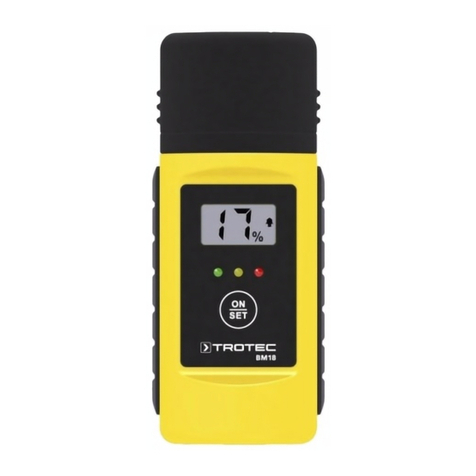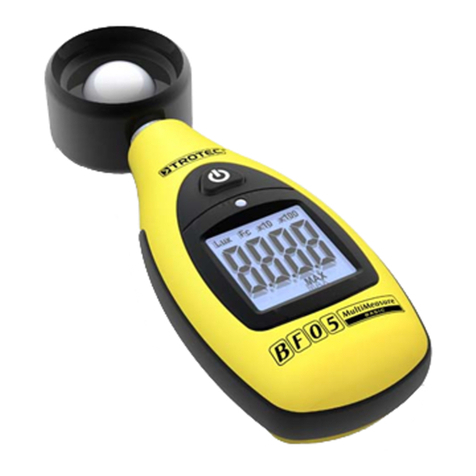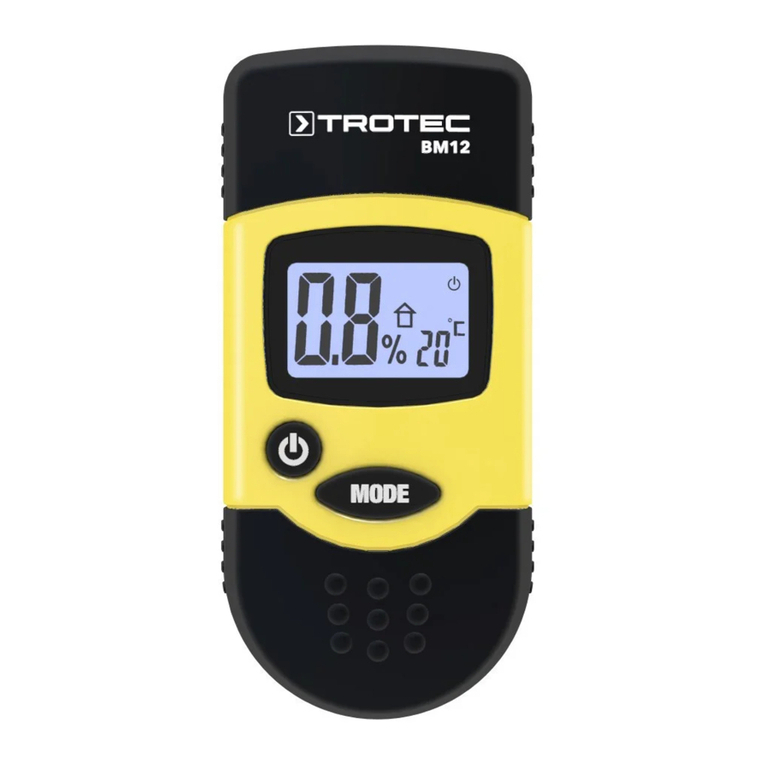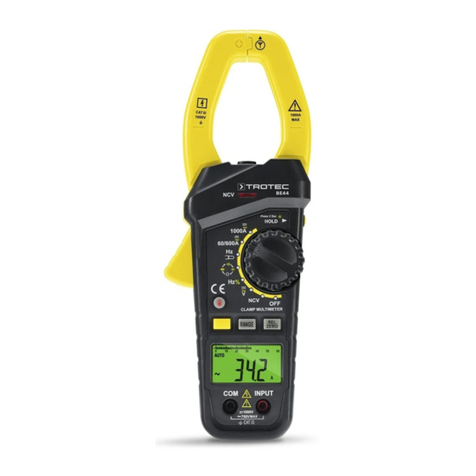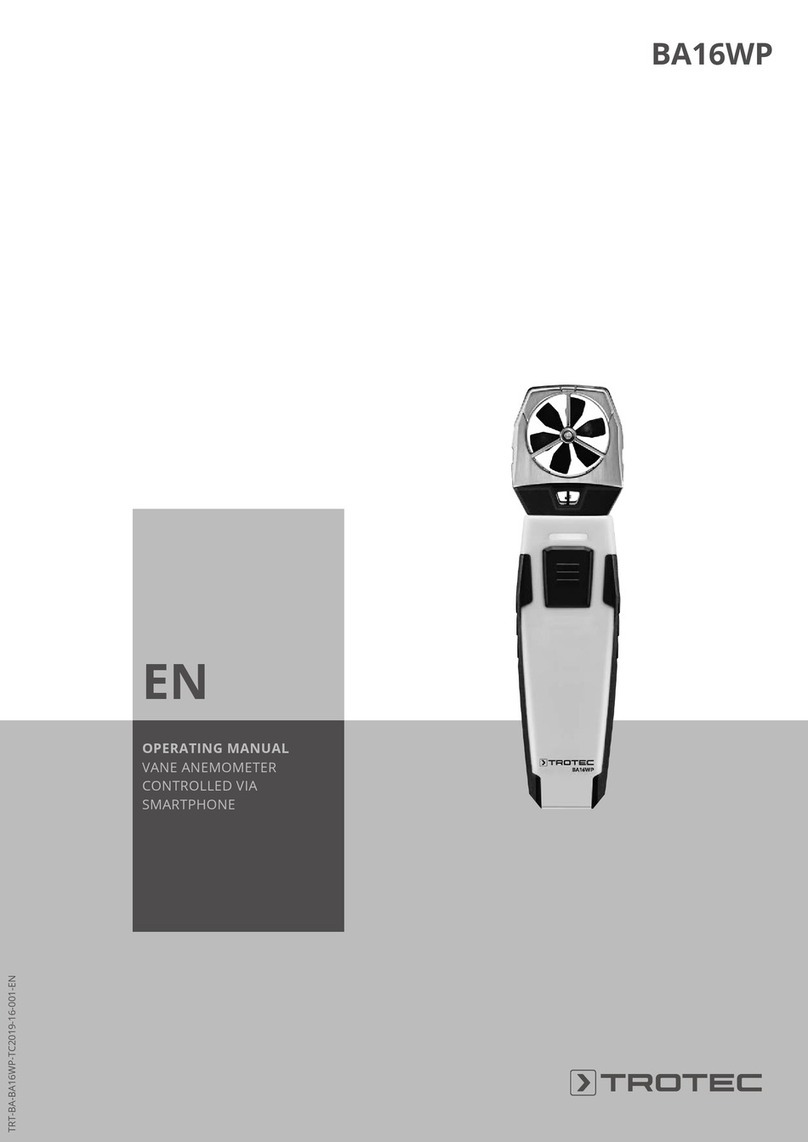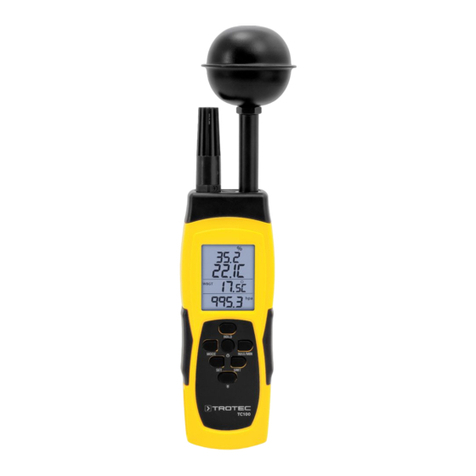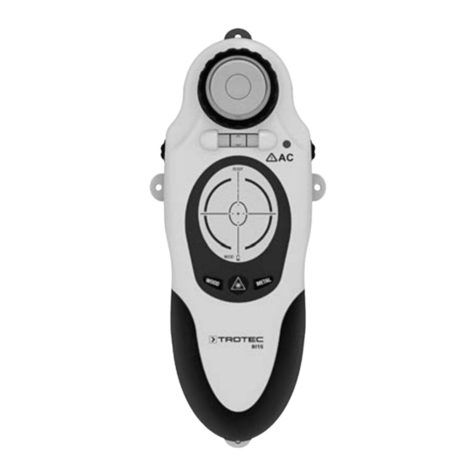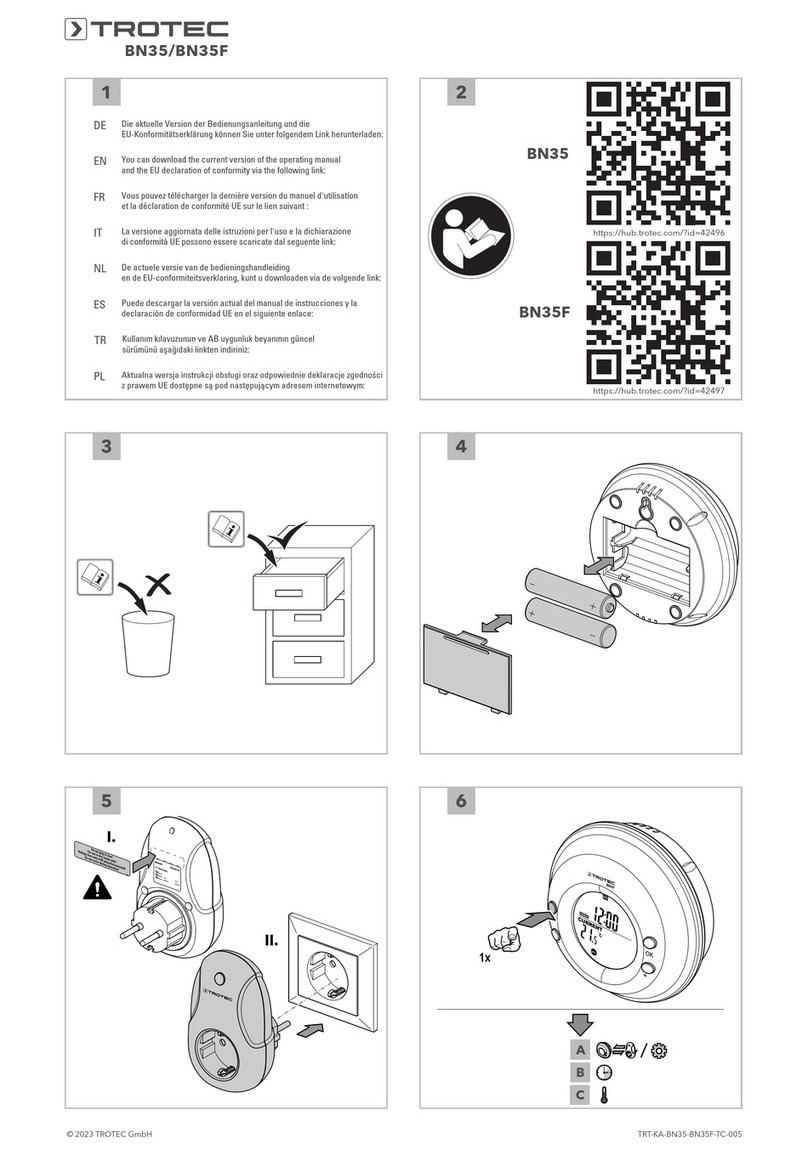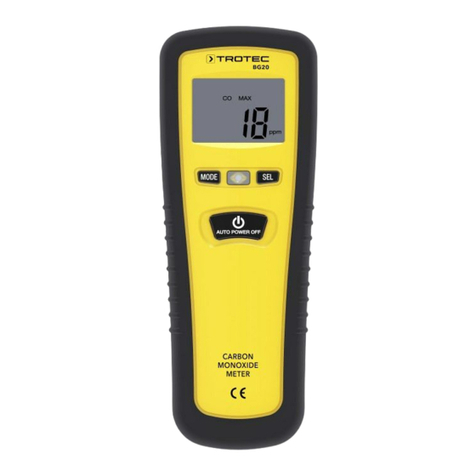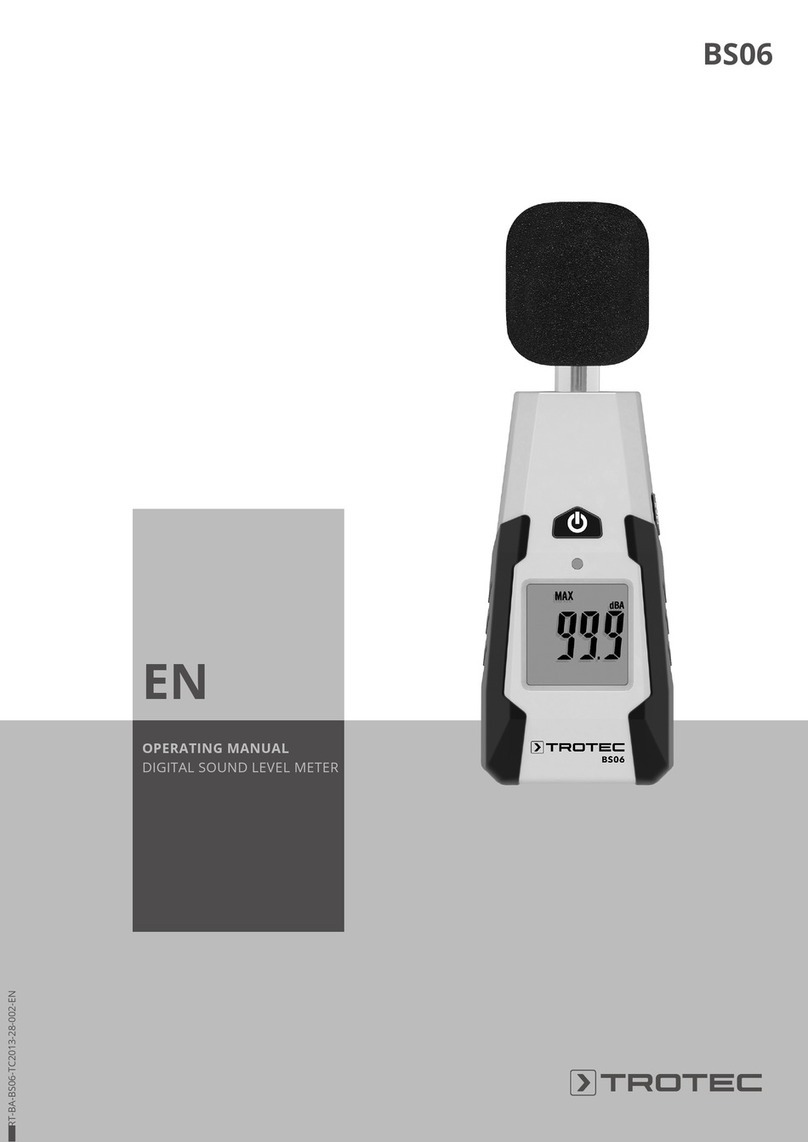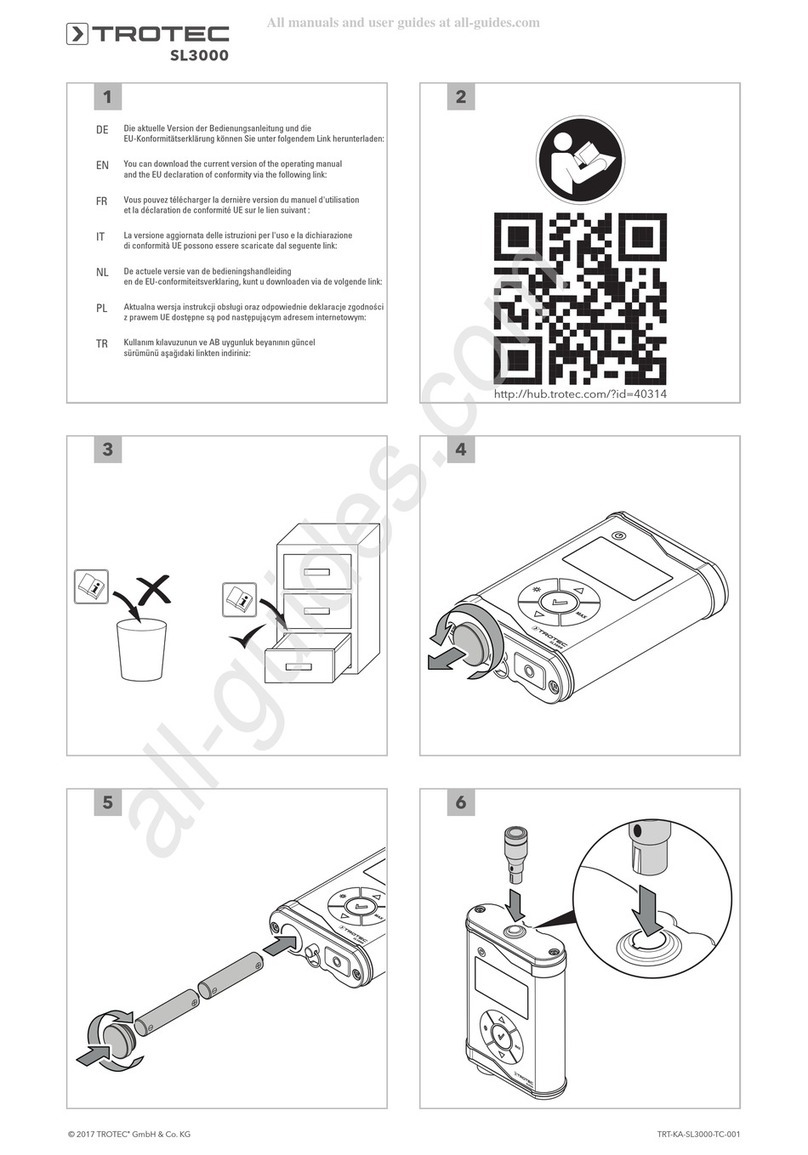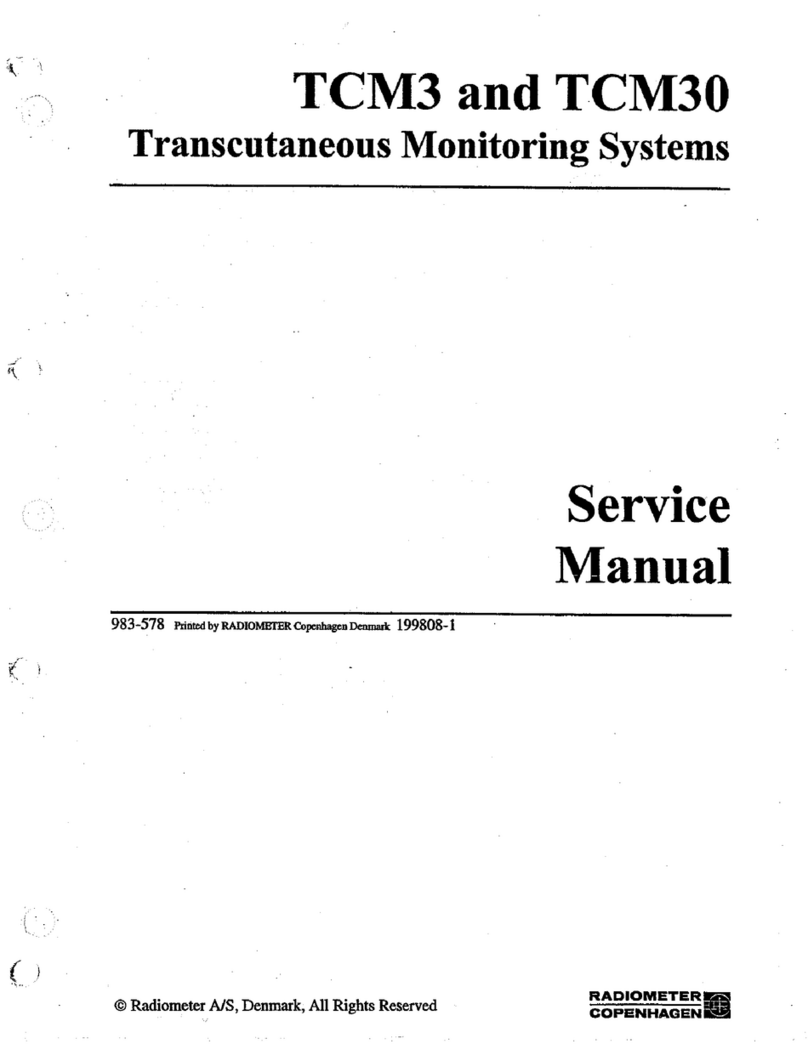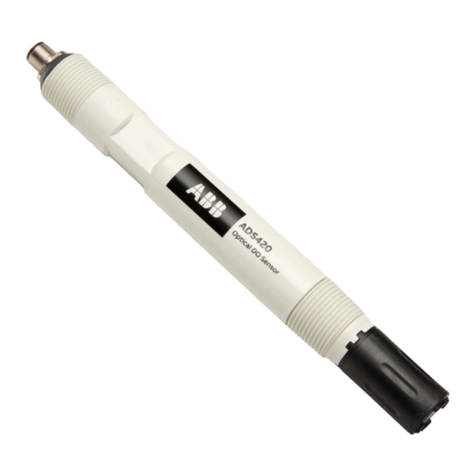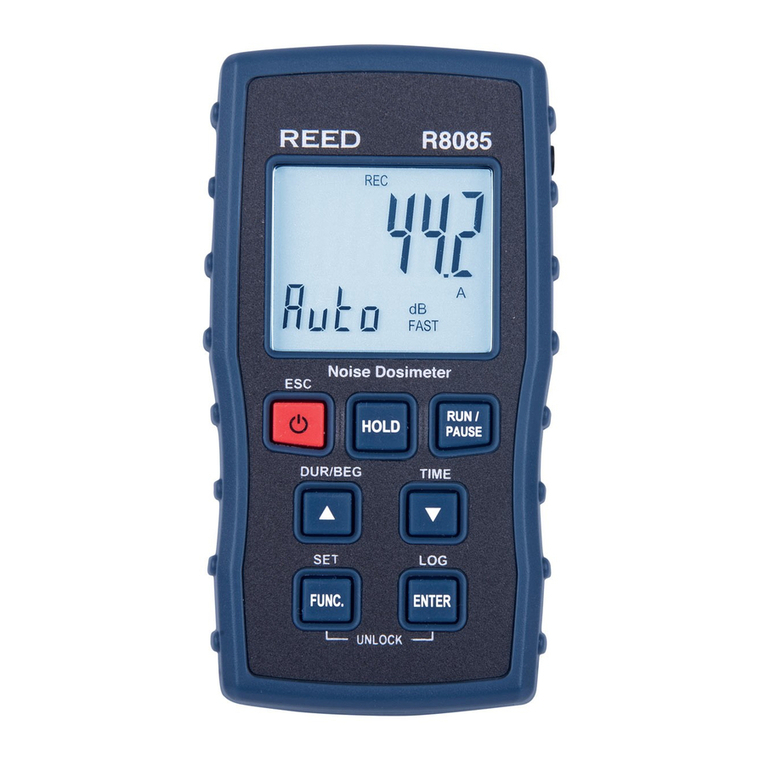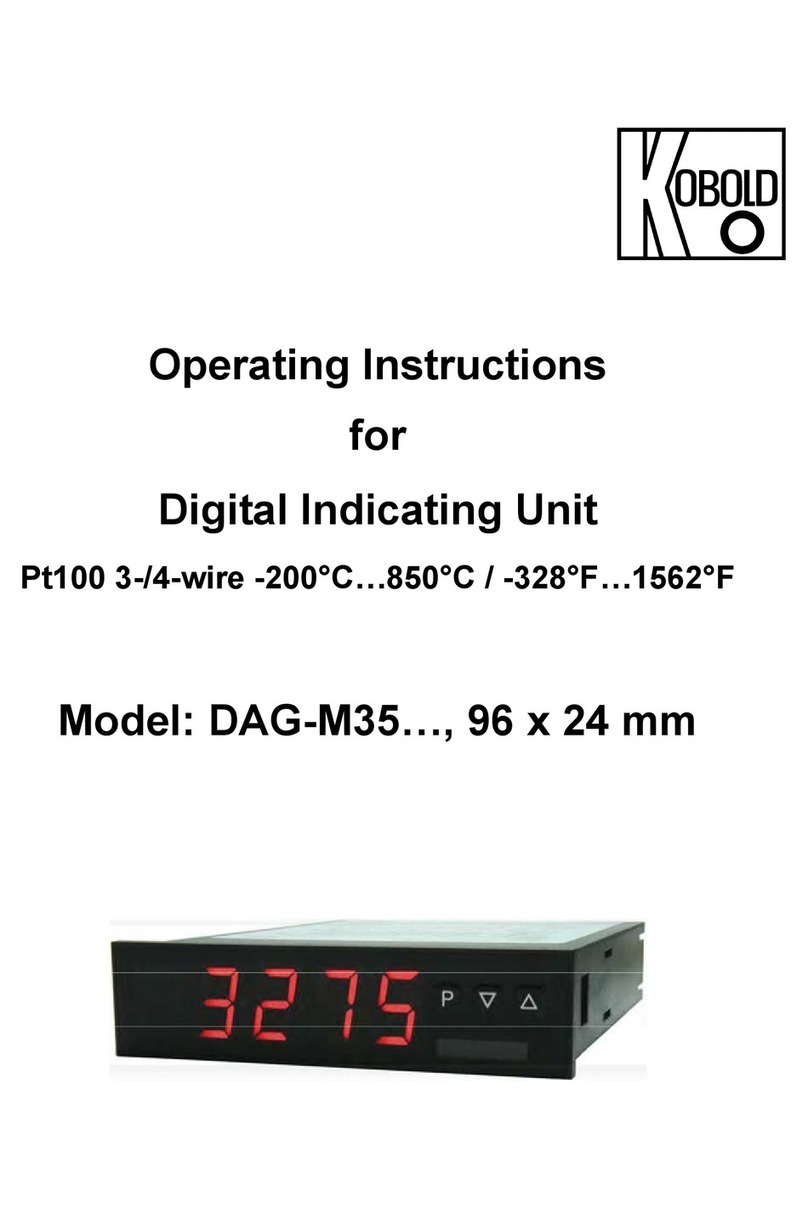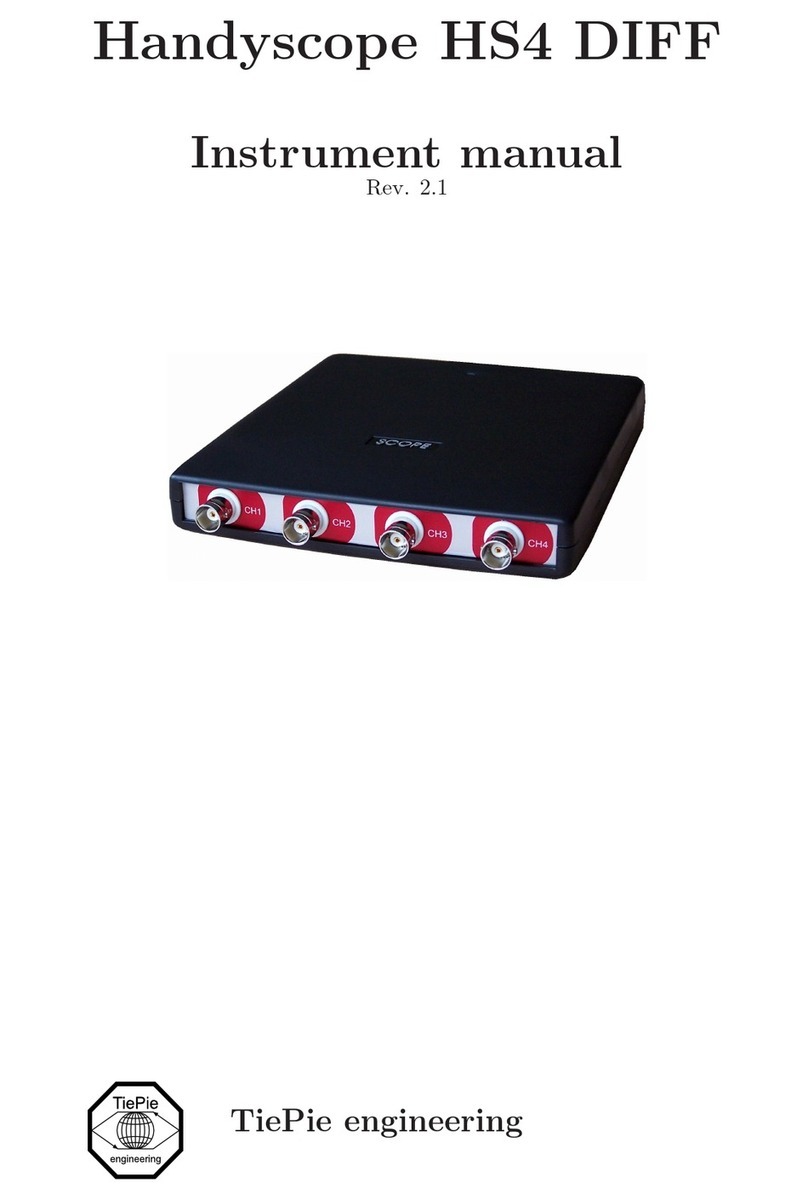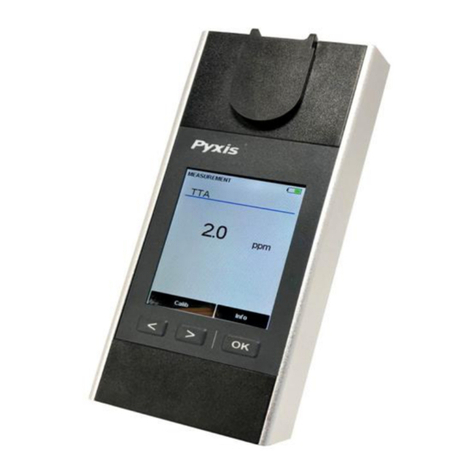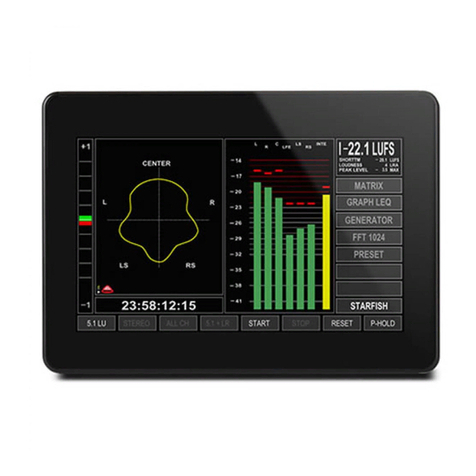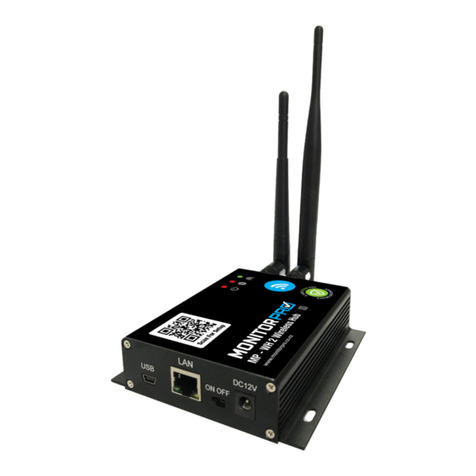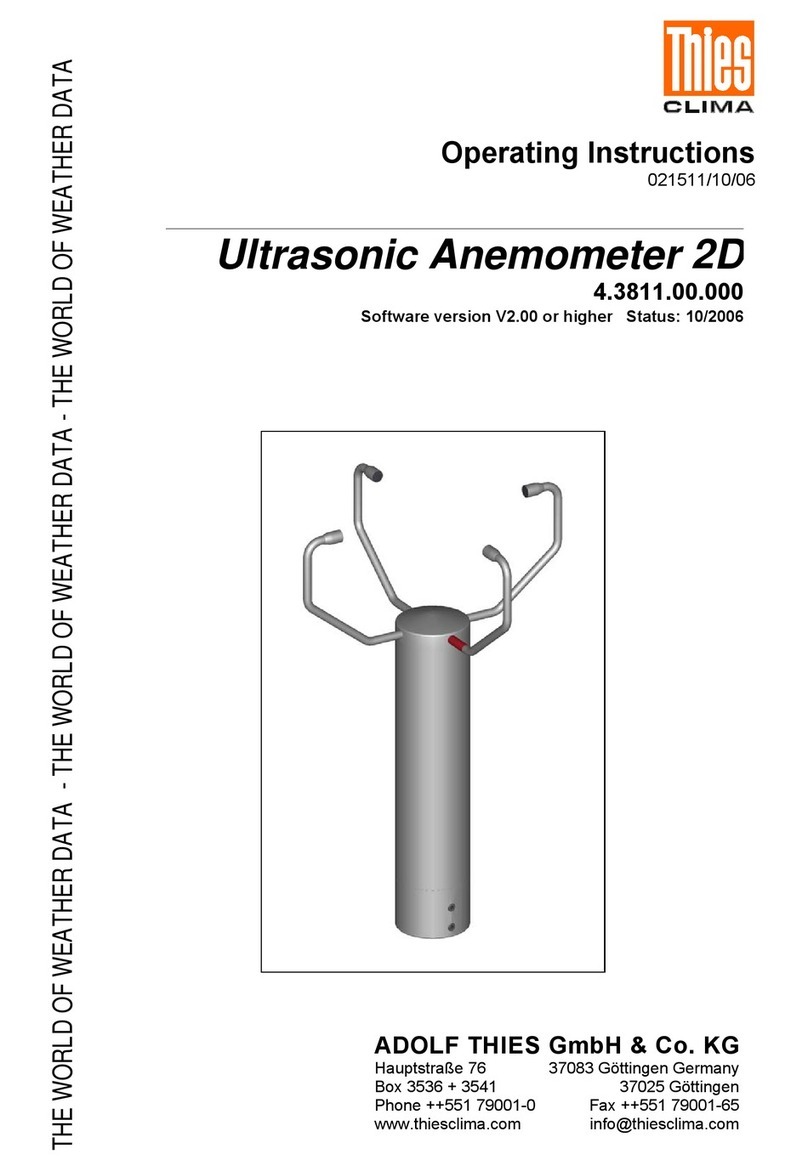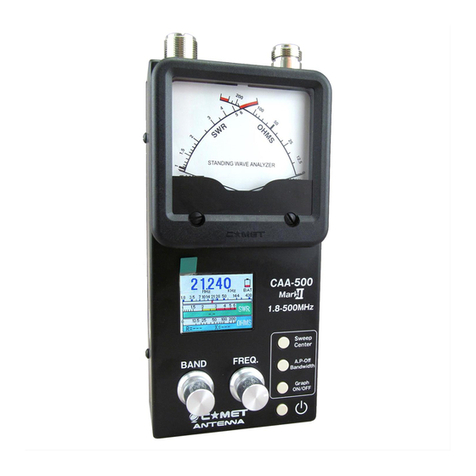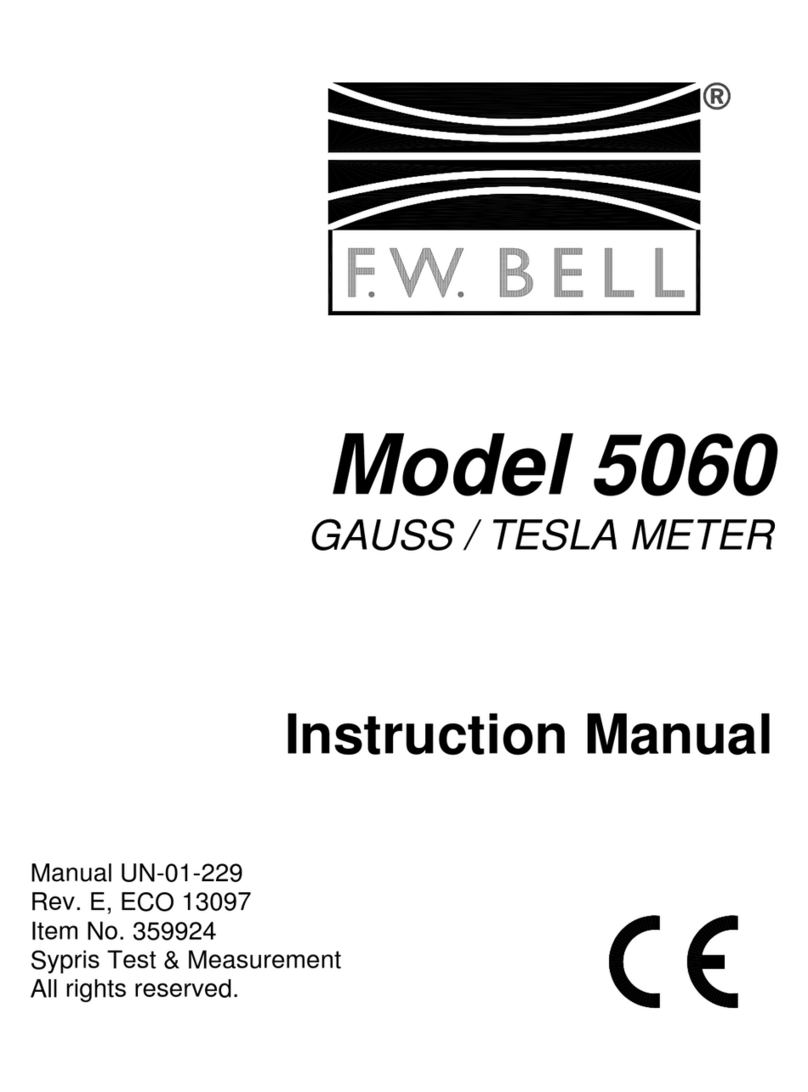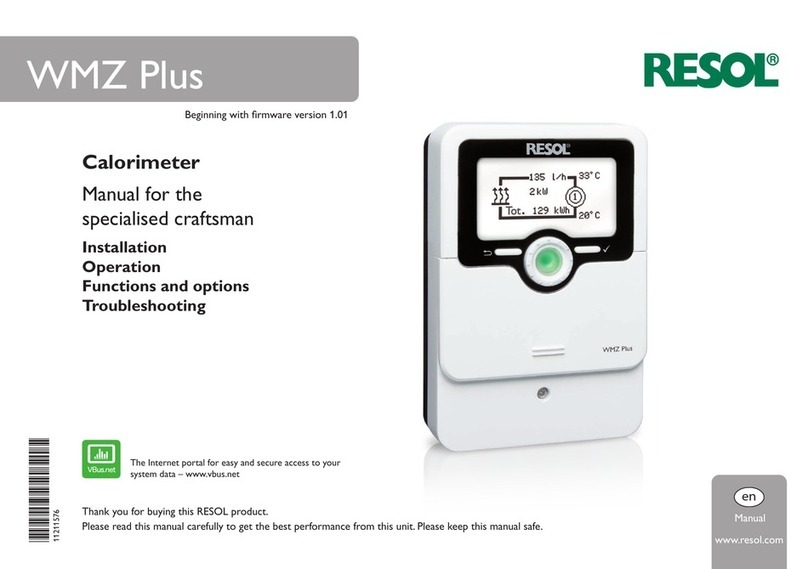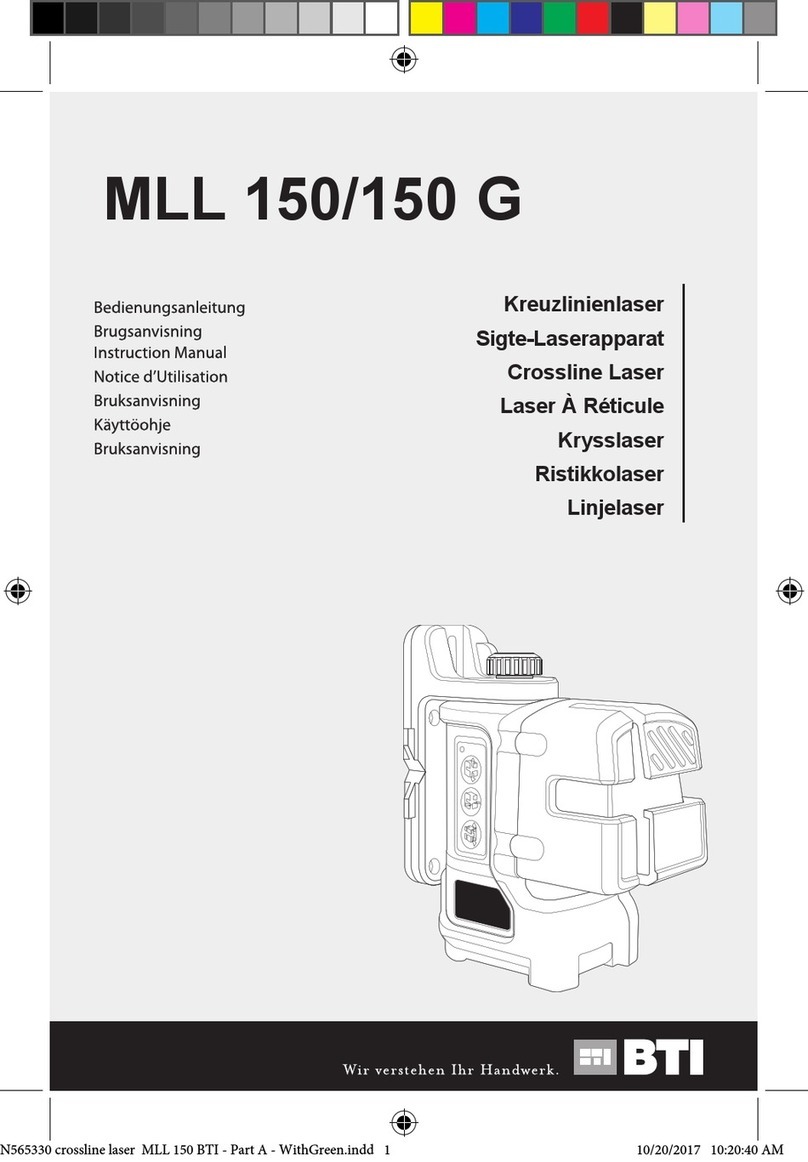Trotec BM12 User manual

OPERATING MANUAL
MOISTURE MEASURING
DEVICE
BM12
EN
TRT-BA-BM12-TC-001-EN

1Operating manual – Moisture measuring device BM12 EN
Symbols
Danger!
Warns of a hazard which can lead to injuries.
Caution!
Warns of a hazard which can lead to damage to property.
The current version of the operating manual can be found at:
www.trotec.de
Legal notice
This release replaces all previous versions. No part of this
publication may be reproduced without written permission from
TROTEC®. The same applies for electronically processing,
duplicating or spreading the publication. Subject to technical
changes. All rights reserved. Trademarks are used without
guarantee that they may be used freely and primarily following
the spelling of the manufacturer. Product names are registered.
Changes to construction in the interests of constant
improvements to the product, as well as changes to the shape
and colour are reserved.
The scope of delivery may vary from product images. This
document was created with all due care. TROTEC®accepts no
liability whatsoever for possible mistakes or omissions.
The only party responsible for determining measured results to be
valid, drawing conclusions and deriving actions is the user!
TROTEC® accepts no claims of warranty for the correctness of
the determined measured values or measured results. Further,
TROTEC®accepts no liability whatsoever for possible mistakes or
damage which have been caused by utilising the determined
measured results. © TROTEC®
Description of the device
By use of the moisture measuring device BM12 the humidity level
of wood and building material can be determined.
Additionally, the ambient temperature can be measured in °C
or °F.
For the display a background illumination can be switched on as
well.
Device depiction
Table of contents
Notes regarding the operating manual .................................... 1
Information about the device................................................... 1
Technical data ........................................................................ 2
Safety ..................................................................................... 2
Transport and storage............................................................. 3
Operation................................................................................ 3
Measuring principle ................................................................ 5
Maintenance and repair .......................................................... 6
Disposal.................................................................................. 6
Declaration of conformity ........................................................ 6
Notes regarding the operating manual
Information about the device
No. Operating element
1 Measuring tips with protective cap
2 Display
3 Mode key
4 Battery compartment with cover
5On/Offkey
4
5
1
2
3

EN Operating manual – Moisture measuring device BM12 2
Display
Scope of delivery
• 1 x Moisture measuring device BM12
• 4 x LR44 button cells
• 1 x Getting started guide
Carefully read the operating manual before using the device
and keep it within reach!
• Do not use the device in atmospheres containing oil, sulphur,
chlorine or salt.
• Protect the device from permanent direct sunlight.
• Do not remove any safety signs, stickers or labels from the
device. Keep all safety signs, stickers and labels in legible
condition.
• Observe the storage and operating conditions (see chapter
Technical data).
Intended use
Only use the device to measure the moisture level of wood and
building materials. Here, read and observe the technical data.
To use the device for its intended use, only use accessories and
spare parts which have been approved by TROTEC®.
Improper use
Do not use the device in potentially explosive atmospheres, for
measurements in liquids or at live parts. TROTEC®accepts no
liability for damages resulting from improper use. In such a case,
entitlements to a warranty are forfeited. Any unauthorised
modifications, alterations or structural changes to the device are
forbidden.
Personnel qualifications
People who use this device must:
• have read and understood the operating manual, especially
the Safety chapter.
No. Display element
6 Battery indication
7 Indication for automatic switch-off
8 Indication of the building moisture measuring mode
9 Indication of the temperature unit
10 Indication of the measured temperature value
11 Percentage
12 Indication of the measured humidity value
13 Indication of the wood moisture measuring mode
Technical data
Measuring principle: Resistance measuring method
Length of measuring tips: 8 mm
Measuring range: Wood moisture: 6 to 44 %
Building moisture: 0.2 to 2.0 %
Temperature: 0 to 50 °C
Measuring range resolution Wood moisture: 1 %
Building moisture: 0.1 %
Temperature: 1 °C
Accuracy: Wood moisture: ± 2 %
Building moisture: ± 0.2 %
Temperature: ±1 °C
Ambient temperature: 0 to 50 °C with 0 to 85 % RH
Power supply: 4 x LR44 button cells
Automatic switch-off: after approx. 2 minutes
%
°C
11
12
6
7
8
9
10
13
Safety

3Operating manual – Moisture measuring device BM12 EN
Residual risks
Danger!
When handling the device there is a risk of injury due to
the exposed measuring tips.
Always put on the protective cap when not in use.
Danger!
Do not leave the packaging lying around. Children may
use it as a dangerous toy.
Danger!
The device is not a toy and does not belong in the hands
of children.
Danger!
Dangers can occur at the device when it is used by
untrained people in an unprofessional or improper way.
Observe the personnel qualifications.
Caution!
To prevent damages to the device, do not expose it to
extreme temperatures, extreme humidity or moisture.
Caution!
Do not use abrasive cleaners or solvents to clean the
device.
Caution!
Exclusively use the original measuring tips included in
the scope of delivery. Other measuring tips might bend
or damage the holder at the measuring device.
Caution!
Never force the measuring device into the material to
be measured or yank it out. Applying force can lead to
bending or breaking of the measuring tips or to the
destruction of the housing.
Transport
For transporting the device use a suitable bag to protect it from
external influences.
Storage
When the device is not being used, observe the following storage
conditions:
•Dry.
• Protected from dust and direct sunlight.
• With a plastic cover to protect it from invasive dust, if
necessary.
• The storage temperature is the same as the range given in
the chapter Technical data.
• When storing the device for a long time, remove the batteries.
Inserting the batteries
• Insert the supplied batteries before first use or remove the
plastic strip from the battery compartment, which serves to
prevent contacting during storage.
Caution!
Make certain that the surface of the device is dry and the
device is switched off.
1. Remove the cover (16) from the device by sliding it in the
direction of the arrow.
2. Insert the new batteries in the battery compartment with
correct polarity.
3. Slide the cover (16) back on the device.
Transport and storage
Operation
16

EN Operating manual – Moisture measuring device BM12 4
Switching on
• Press the On/Off key (5) for approx. 2 seconds.
– The display is switched on and the device is ready for
operation.
Note:
Note that moving from a cold area to a warm area can lead to
condensation forming on the device's circuit board. This physical
and unavoidable effect can falsify the measurement. In this case,
the display shows either no measured values or they are
incorrect. Wait a few minutes until the device has become
adjusted to the changed conditions before carrying out a
measurement.
Carrying out a measurement
1. Remove the protective cap from the measuring tips.
2. Briefly press the Mode key (3) to select the desired
measuring mode.
– If symbol 8 appears on the display, building moisture
measuring mode is activated.
– If symbol 13 appears on the display, wood moisture
measuring mode is activated.
3. If possible, carefully prick the measuring tips a few
millimetres into the material.
4. Read the measured value from the lower measurement value
display.
5. Carefully pull the device out of the material by gently moving
it in turns to the left and to the right.
6. Upon conclusion of the measurement put the protective cap
back on the device.
Changing the unit °C / °F
• Press the Mode key (3) for approx. 3 seconds.
– The display (9) changes to either °C or °F.
– The measured temperature value (10) adapts to the
selected unit.
Switching on the background illumination
• Briefly press the ON/OFF key (5) to switch the background
illumination for the display on or off.
Setting the measuring mode
• Briefly press the Mode key (3).
– If symbol 8 appears on the display, building moisture
measuring mode is activated.
– If symbol 13 appears on the display, wood moisture
measuring mode is activated.
Automatic switch-off
If the symbol for automatic switch-off (7) is displayed, the
device will switch off automatically when not in use for
approx. 2 minutes.
To deactivate automatic switch-off, please proceed as follows:
1. Switch off the device, if necessary.
2. Press and hold the Mode key (3) whilst switching the device
on with the On/Off key (5).
– The symbol (7) is no longer displayed.
– Automatic switch-off is deactivated.
– Automatic switch-off is reactivated as soon as the device is
switched off.
Switch-off
With activated automatic switch-off function (7) the device
switches off after approx. 2 minutes of non-use.
• Press the On/Off key (5) for approx. 3 seconds.
– The device is switched off.

5Operating manual – Moisture measuring device BM12 EN
The measuring device at hand serves for the rough determination
of the material or wood moisture content according to the
resistance measuring method. Fields of application are wood
moisture measurements of sawn timber and firewood. Moreover,
the measuring device can be used to detect the moisture in soft
building materials such as gypsum or plaster.
The resistance measuring method is an indirect measurement
method, since the moisture content of the measured material is
deduced from the its conductivity.
Influencing variables suitable to change the conductivity, e.g.
electrically conducting materials or dissolved salts, hence also
have a direct influence on the determined measured values.
Therefore, the displayed measured values can only be considered
as indicator of the moisture content.
Notes on use regarding the wood moisture measurement:
For wood moisture measurement a calibration curve is stored in
the device, which corresponds to the average of the relevant
kinds of wood in Europe based on a wood temperature of 20 °C.
Therefore, no further settings are required for a quick rough
determination of the wood moisture content. If precise wood
moisture values are required for other wood temperatures or with
due regard of the type and bulk density of a certain timber, an
additional control measurement applying the Darr procedure or
else using a wood moisture measuring device with temperature
comparison function and selection option for the specific wood
type calibration is recommended.
• Always insert the measuring tips transverse to the wood fibre
direction. The conductivity transverse to the wood fibre
direction is lower than that in line with it.
• When selecting the measuring positions observe the
following:
– Always measure the material moisture at three different
positions in order to achieve a sufficient accuracy by
means of the arithmetic average.
– Do not measure the face, because there are mainly dry
areas.
– Preferably do not measure at cracks, branches or resin
pockets either.
• Oily and/or aqueous timber preservatives affect the
measurement result.
• If possible, do not measure wood with a temperature
below -5 °C. Too low wood temperatures distort the result of
the measurement.
• Avoid static charge of the material to be measured due to
friction. Static charge distorts the measurement result.
• With a wood moisture of less than 10 %, electrostatic forces
can appear at the good to be measured. This can falsify the
result of the measurement. Experience has shown that this
occurs at the outlet of veneer drying plants. Remove the
static charge by use of suitable grounding measures.
• The measurement's accuracy depends on the contact
pressure of the measuring tips. The measuring tips must be
connected to the wood in a way that the contact resistance is
small as compared to the measuring resistance.
Notes on use regarding the material moisture measurement:
No further settings are required for the quick determination of the
material moisture
at the device. Nevertheless, when assessing the measurement
results one has to bear in mind that increased occurrences of
soluble salts in the measured material can distort the result of the
measurement. The more salts present, the higher the
conductivity of the material and the higher will be the displayed
measurement value.
Further observe disruptive influences due to electrically
conducting substances:
If a construction material contains electrically conducting
substances, it also has a lower resistance value, which then
simulates high moisture values. Which means that a too high
measured value is displayed.
From visual inspection it is not always apparent, whether there
are any electrically conducting substances inside the
construction material.
Some of the main error sources here are in particular
reinforcements, metal laminations and conducting insulation
such as slag in timber beam ceiling constructions. Especially in
case of insulation materials with metal lamination, measured
values are often misinterpreted during the resistance
measurement. Quantitative conclusions about the moisture
content of the mineral material to be measured can only be drawn
by applying the Darr procedure or the CM method.
Measuring principle

EN Operating manual – Moisture measuring device BM12 6
Battery change
A battery change is required, when the Battery indication (6)
lights up or the device can no longer be switched on. See
Inserting the batteries on page 3.
Exchanging measuring tips
Exchange the measuring tips when these exhibit signs of wear
(e.g. oxidation, deformation, heavy, irremovable contamination).
• Ensure that the device is switched off.
1. Remove the protective cap (1) from the device.
2. Detach the screwed-on measuring tips from the device.
3. Screw the new measuring tips into the device.
Cleaning
Clean the device with a soft, damp and lint-free cloth. Ensure that
no moisture enters the housing. Do not use any sprays, solvents,
alcohol-based cleaning agents or abrasive cleaners. Only use
clean water to moisten the cloth.
Repair
Do not modify the device. Never open the device housing or install
any spare parts. For repairs or device testing, contact the
manufacturer.
In the European Union, electronic equipment must not
be treated as domestic waste, but must be disposed of
professionally in accordance with Directive
2002/96/EC of the European Parliament and Council of
27th January 2003 concerning old electrical and electronic
equipment. At the end of its life, please dispose of this instrument
in a manner appropriate to the relevant legal requirements.
in accordance with the EC Low Voltage Directive 2006/95/EC and
the EC Directive 2004/108/EC about electromagnetic
compatibility.
Herewith, we declare that the moisture measuring device BM12
was developed, constructed and produced in compliance with the
named EC directives.
The marking is found on the rear of the device.
Manufacturer:
Trotec GmbH & Co. KG
Grebbener Straße 7
D-52525 Heinsberg
Phone: +49 2452 962-400
Fax: +49 2452 962-200
E-mail: info@trotec.com
Heinsberg, 30/06/2014
Managing Director: Detlef von der Lieck
Maintenance and repair
16
17
1
Disposal
Declaration of conformity
Other manuals for BM12
2
Table of contents
Other Trotec Measuring Instrument manuals
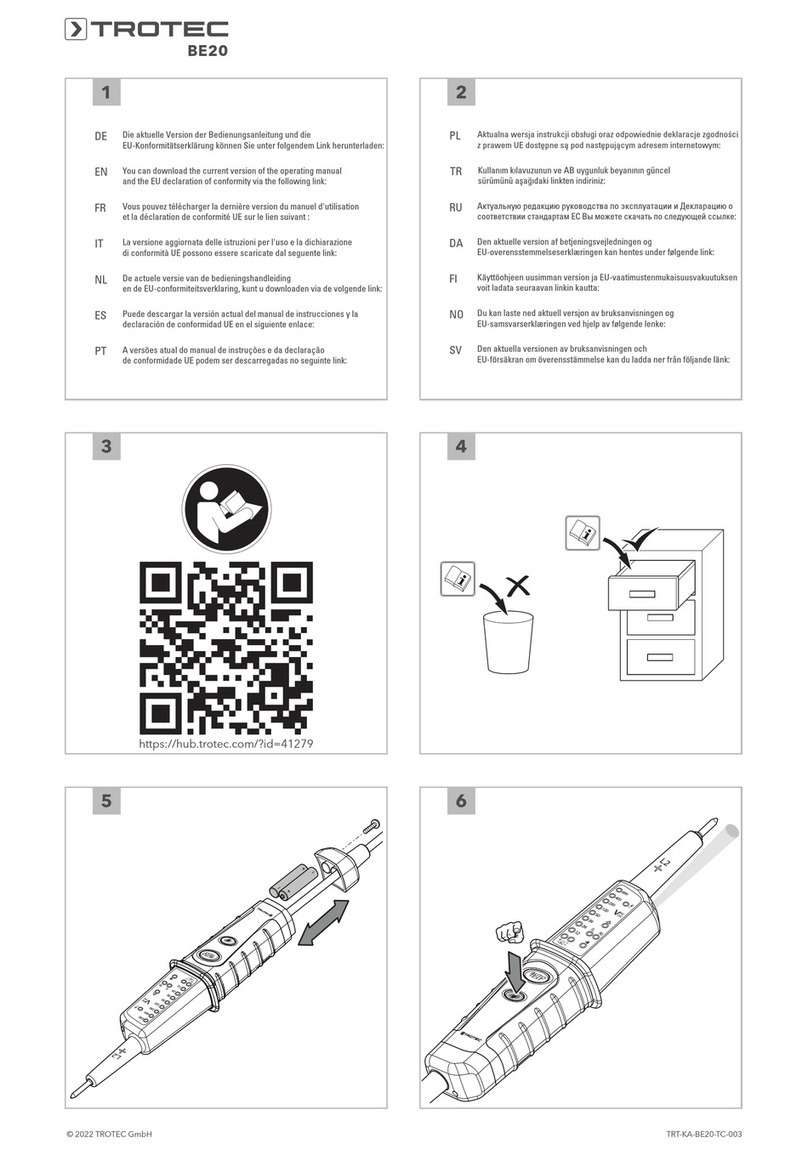
Trotec
Trotec BE20 User manual
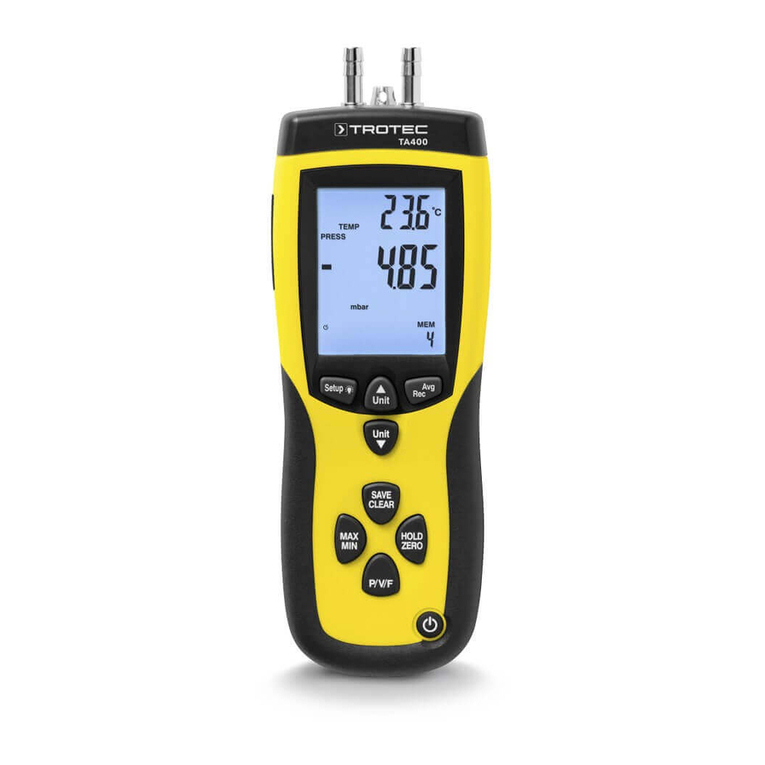
Trotec
Trotec TA400 User manual
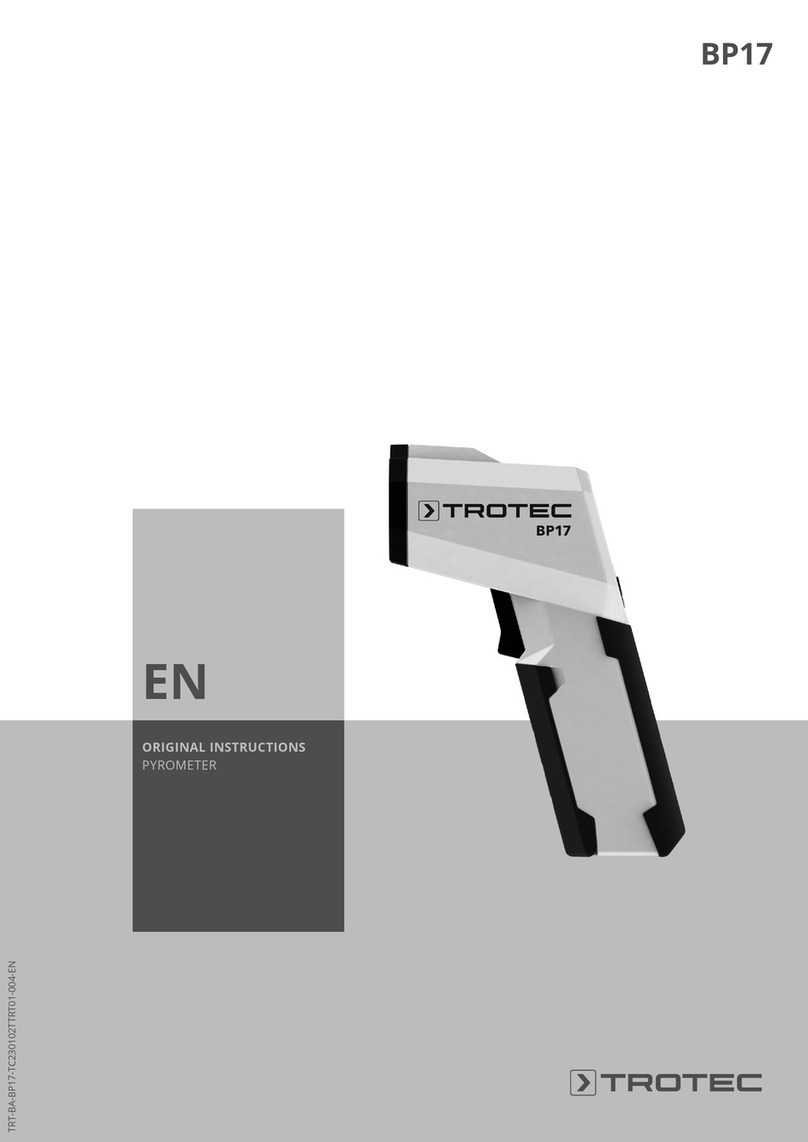
Trotec
Trotec BP17 User manual
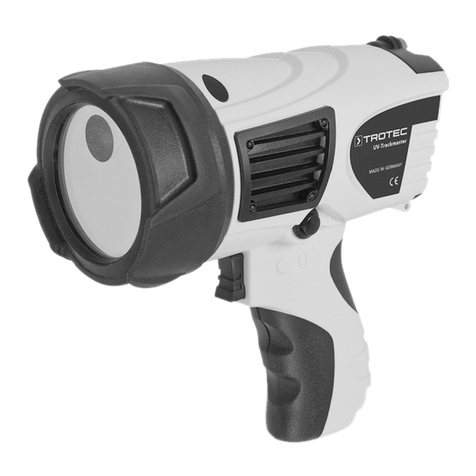
Trotec
Trotec UV TRACKMASTER WF User manual

Trotec
Trotec BA30WP User manual
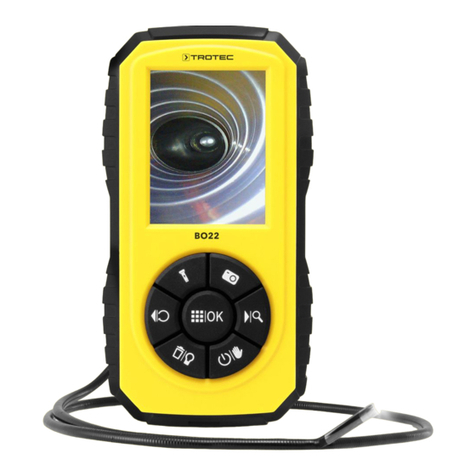
Trotec
Trotec BO22 User manual
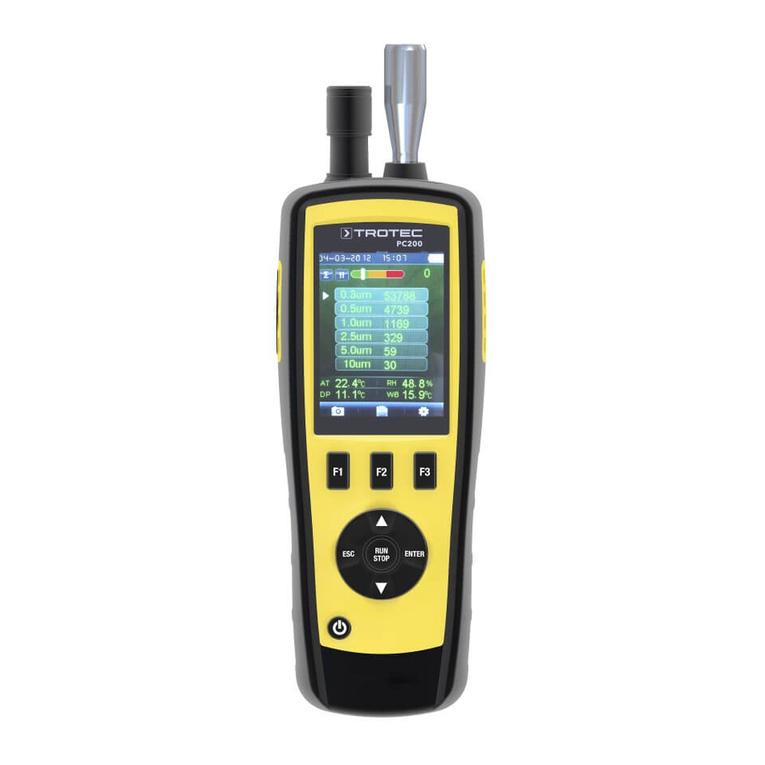
Trotec
Trotec PC200 User manual
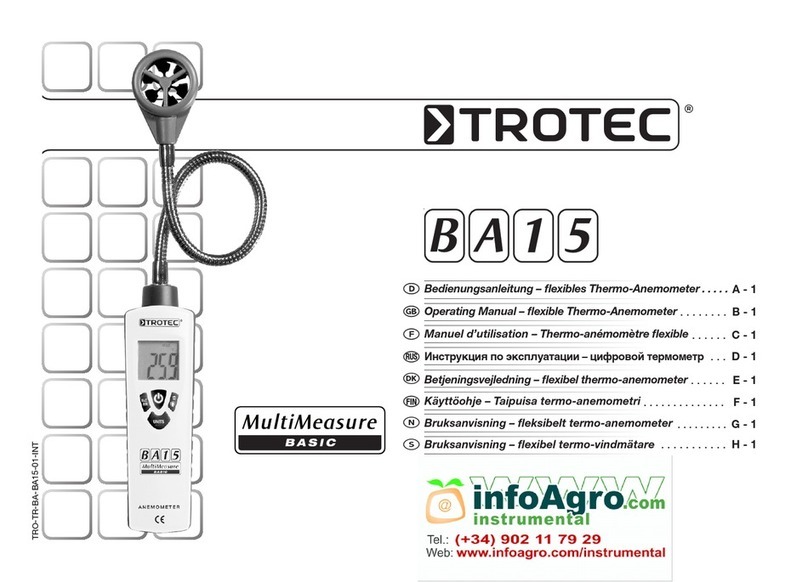
Trotec
Trotec MultiMeasure Basic BA15 User manual
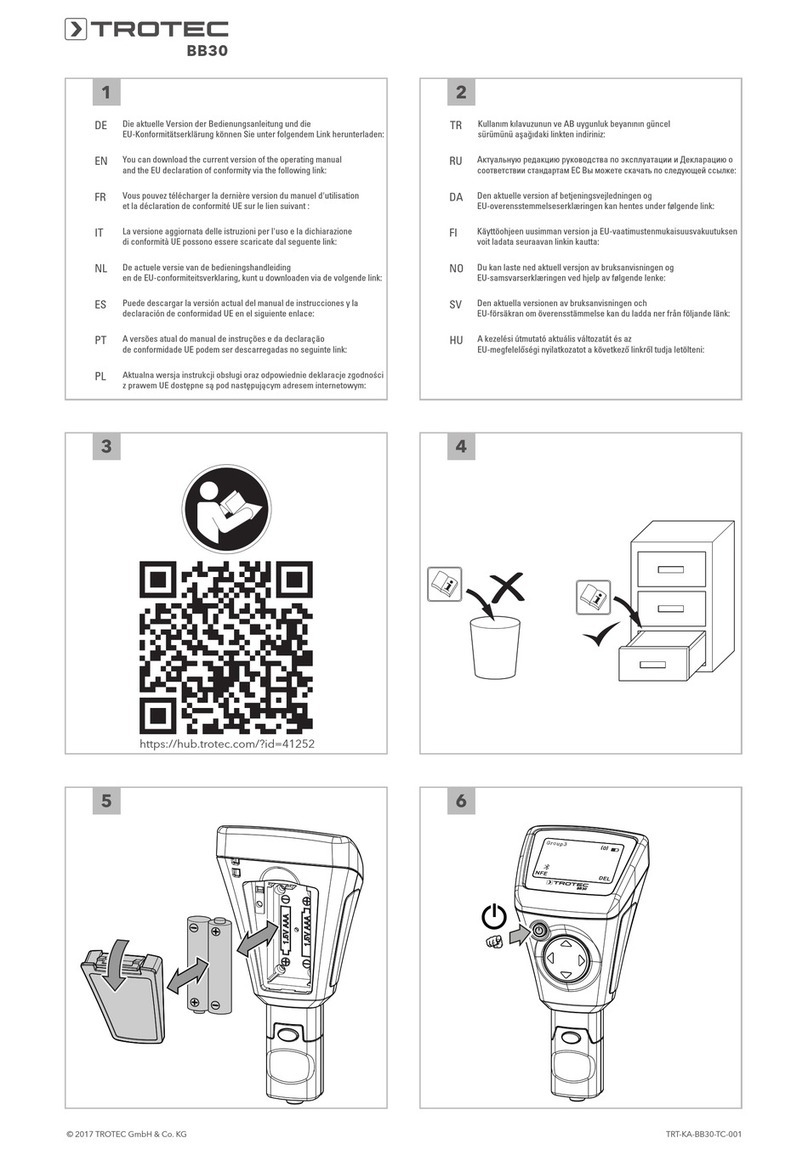
Trotec
Trotec BB30 User manual
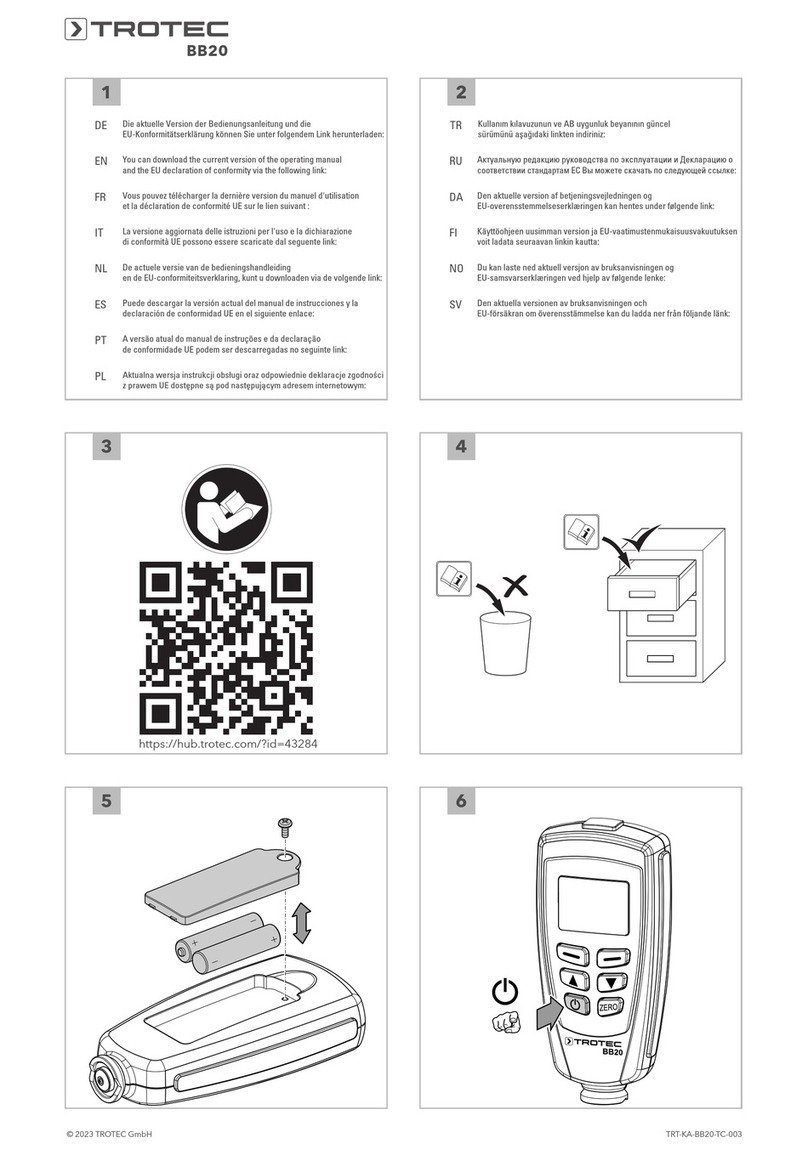
Trotec
Trotec BB20 User manual
